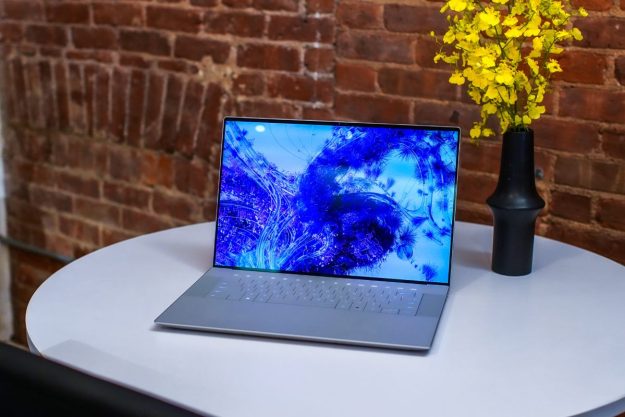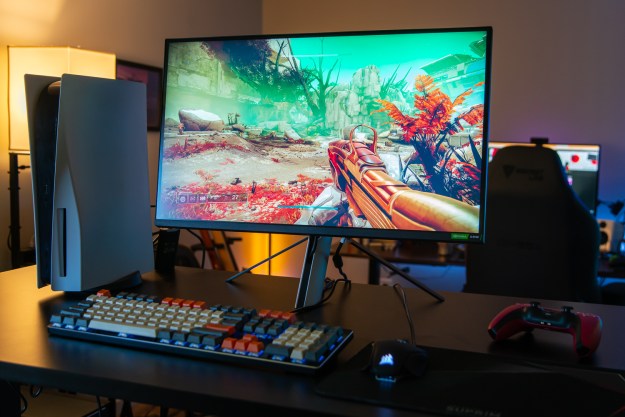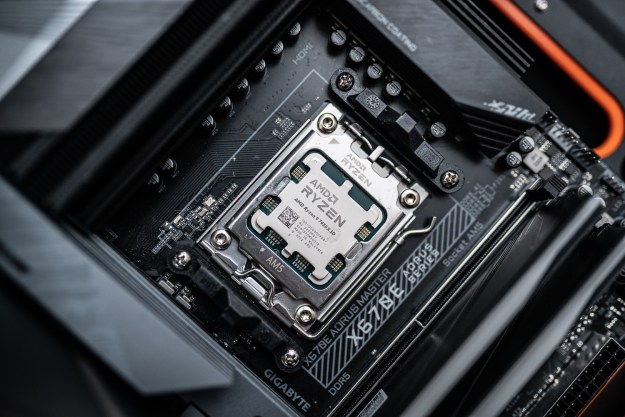Gigabyte recently updated its Brix-branded portfolio with the GB-EKi3A-7100. It’s the first in the family to use a seventh-generation “Kaby Lake” processor from Intel, and follows Gigabyte’s GB-EACE-3440 in packing a similar overall design based on an older Intel N3450 “Apollo Lake” chip. Both are ideal for those who need a powerful, quiet PC that’s mountable under a desk or on the backplate of a monitor.
Gigabyte’s new Brix unit is based on a compact, fanless design. It includes a VESA mounting bracket, Wireless AC connectivity, plenty of ports for peripherals and additional displays, and even two USB 3.1 Gen2 ports providing transfer speeds at up to 10Gbps. These ports are great for connecting additional displays when the HDMI and Mini DisplayPort connections just aren’t enough.
Here are the specs:
| Processor: | Intel Core i3-7100U |
| Graphics: | Intel HD Graphics 620 |
| Memory: | 2x DDR4 1.2v slots (2,133MHz, 32GB maximum) |
| Storage: | 1x M.2 slot PCIe/SATA (2280) |
| Connectivity: | Wireless AC (Intel 3165) |
| Audio: | Realtek ALC255 |
| Ports (front): | 1x Microphone/headphone combo jack 1x USB 3.1 Gen2 Type-C 1x USB 3.1 Gen2 Type-A !x RS232 COM port |
| Ports (back): | 2x USB 3.1 Gen1 1x gigabit Ethernet 1x Mini DisplayPort 1.2 1x HDMI 2.0 |
| Ports (side): | 2x antenna SMA connectors |
| Motherboard size: | 4.13 x 4.52 inches |
| Dimensions: | 1.42 x 4.61 x 7.09 inches |
| Weight: | 2.15 |
| Price: | ~$380 |
What’s important to note here is that customers are required to purchase memory and storage in addition to the bare-bones unit. The device supports up to 32GB of DDR4 memory clocked at 2,133MHz, but the company doesn’t provide any information about the storage capacity of the M.2 SSD slot. That “2280” number refers to the dimensions of the M.2 SSD stick, as you just simply install any M.2 SSD into the slot.
Another feature we’d like to point out is the use of USB 3.1 Gen2 tech. When the second generation of USB 3.0 hit the scene, the conglomerate that regulates the USB standard decided to mix things up and rename both generations. That said, the old USB 3.0 ports are now called USB 3.1 Gen1, which still speeds along at 5Gbps. The newer generation clocking speeds at 10Gbps is now called USB 3.1 Gen2.
To visually distinguish the two generations, USB 3.1 Gen1 (formerly USB 3.0) continues with the blue theme. The USB 3.1 Gen2 tech apparently relies on red so that customers can quickly tell between the two connections. But that’s only when the ports rely on the larger Type-A rectangular size, and not the newer miniature Type-C port size. Remember, Type-A and Type-C have absolutely nothing to do with port speed, but with port size. The Type-A model relies on a single-sided “this side up” connector whereas Type-C boasts a dual-sided “any side up” reversible connector.
On the processor font, Intel’s seventh-generation dual-core chip has a base clock speed of 2.40GHz, and no turbo. Other highlights include four threads, a cache of 3MB, and a maximum power draw of 15 watts. It’s an ideal chip for a miniature, mountable PC that doesn’t rely on internal fans to cool the innards. In this case, the heat is simply distributed by the unit’s vented exterior.


